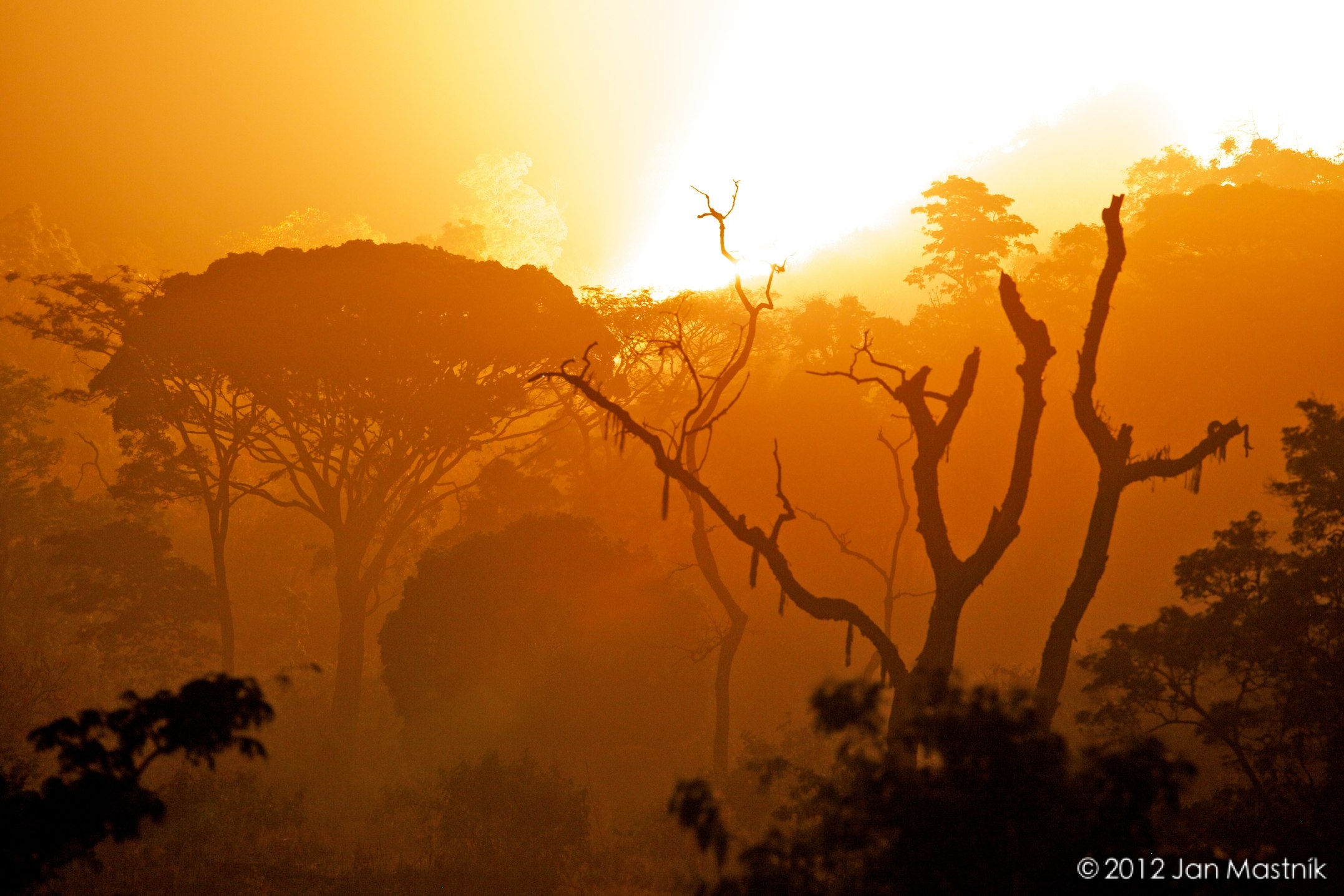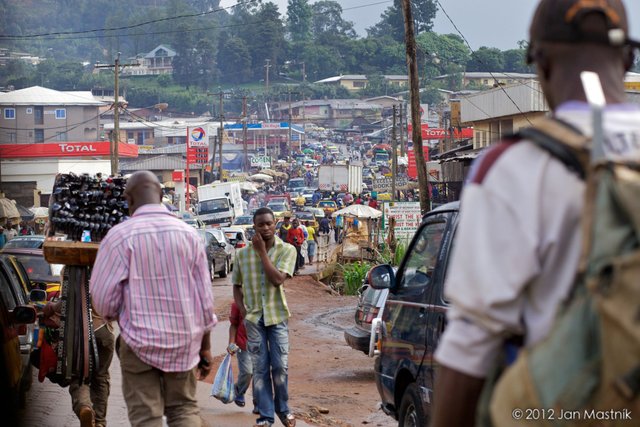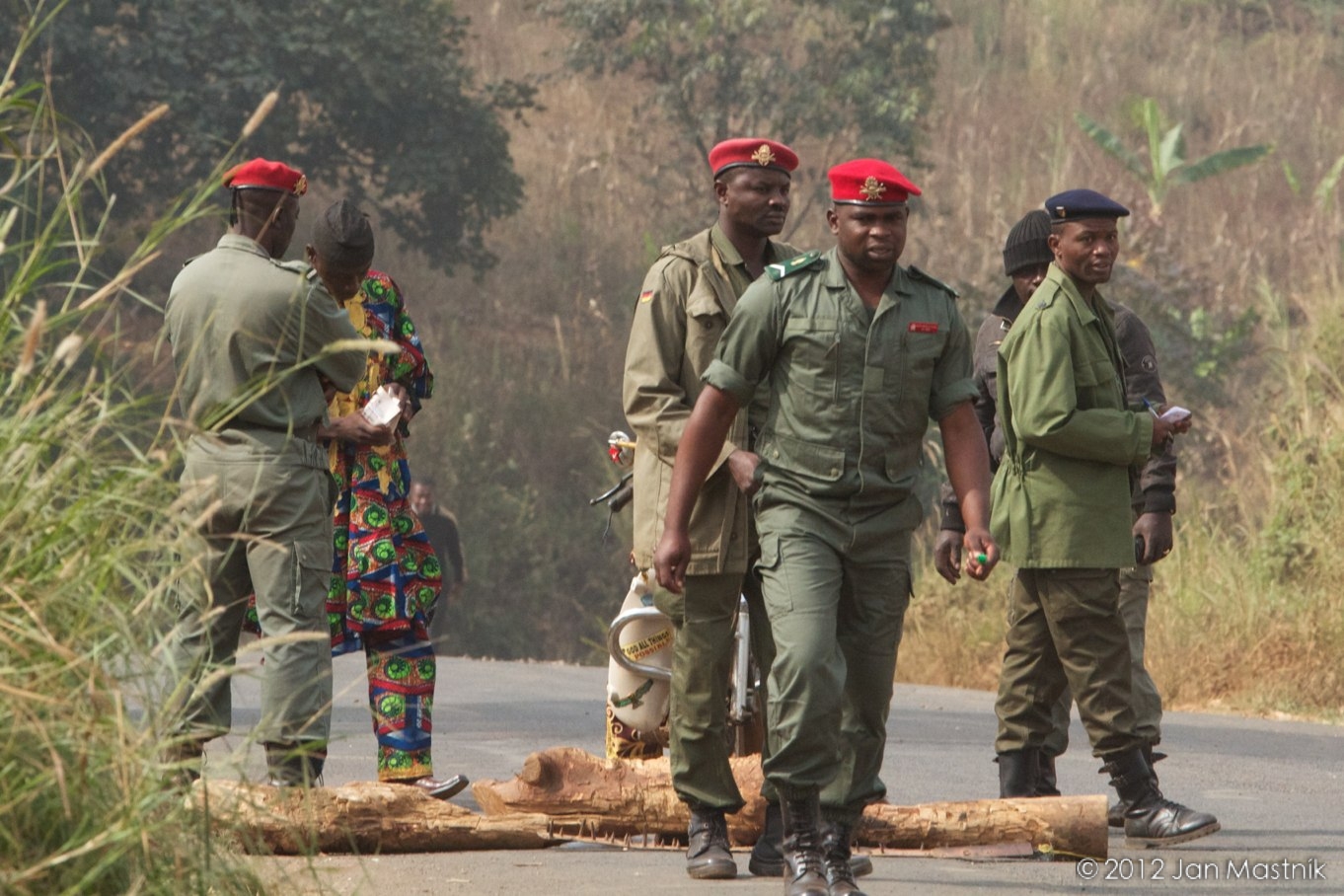Urbanization and increase in population
Cameroonian mountains used to display long term climate stability ard, therefore, became one of the most populated areas in Africa. Even without large agglomerations, the population density is reaching 150 people/km2. In Cameroon, the population has more than tripled in 35 years, rising from 7.1million in 1980 to 24.4 million in 2016. Nowadays, the population growth is slowly decreasing but remains higher than 2 % every year. Average amount of children for one woman is more than 4. Tubah subdivision where the mountain forest is situated has 70.000 people on 500 km2. Traditionally, the forest was providing everything the local communities needed in open-source mode. E.g., foodstuffs, water, medicine, fuelwood, animal fodder and building materials. Forest, back then ten-fold larger in area covered, was supplying for population with size of third of the current one. The still fast growing population is asking further land, roads to untouched areas with high quantity of natural resources emerge. This development is not sustainable, for sure not with old paradigms of land use and without environmental thinking.


Education and resources
Education in Cameroon suffers from overcrowded classes with least 60 children per class. Teaching methods applied do not support individual and self conscious development of character. Reflective thinking, i.e. concerning the sustainability of lifestyles are not fostered. There is a lack of educational facilities and well as of qualified teachers. There is no didactic material and equipment for specialised classrooms. Students do not attend any field experiences or practical work. The result is fast growing not well educated population without proper access to relevant informations.
Natural resources management
In Tubah subdivision, mostly slash and burn farming methods is practiced by more than 70% of population. Typically, only annual crops as corn, potatoes, beans are planted. Those are imported species which prosper only with difficulties and with a battery of chemicals as support. Moreover, the soil after clearing of the forest only harbors 50 cm layer of humus and gets exhausted and/or eroded in only a few years. This land then has to be abandoned or heavily treated with fertilizers. Rational, long term cultivation on one farm with use of principles of organic agriculture, forestry and agroforestry would decrease erosion rates, spare the water sources of the poisoning chemicals, leave more room for forest and bring regular and sustainable income for the farmers, higher to their current incomes. Furthermore, virtually no marketing strategies are used by the farmers. Farmers are therefore cut from their revenues and their potential customers from their goods. On top of this, processing capacities and/or storage facilities are non existent, therefore huge amount of crop yields end spoiled (astonishing 150 kg per year of food per capita).
Involvement of local authorities
For decades, the local authorities did not display too much interest in forest conservation. This lack of involvement contributed to low success rate of conservation projects launched in Abongphen in the past. Under pressure of climatic and economic effect of the deforestation as well as other factors, the current representatives recognise the negative impact of decline of the Misty Mountain forest and express their full concern. Their role can be especially in sensitization of their people.
Non-sustainable approach to development
However investments of local organizations are necessary for the development of the area, the current directions of those investments go directly against rational understanding of the situation. Instead of steps ensuring sustainability of human lives and actions in the area, investments are made to mechanize and chemicalize agricultural practices in the forest area. Since the market-farm road was constructed in 2016, more farmers use the new opportunity to open their own farm in the mountain and serious land grabbing is taking place too. Approximately 200 farmers and grazers are practicing their agriculture all over the mountain, water catchments areas included. In past 25 years, the forest area decreased by 80%. Currently, the area is covered by approx.: 250 hectares of primary forest, 500 hectares of secondary forest, 750 hectares of farming land and 1000 hectares of grazing land.
Lack of implementation of environmental laws and policies
While a law (No. 94/01 of 20th January 1994) 'To lay down forestry, wildlife and fisheries regulations' was approved no actions are taken implement it. Overall, it seems that while the Ministry of forestry and wildlife is in charge of forest protection it displays no signs of interest in environmental conservation. The only objective seems to be to sell Cameroonian wood, generating immediate incomes in highly fraudulent and corruption-friendly transactions.

Water and fertility level decreasing
In Tubah subdivision, the forest springs directly supply drinking water to all four villages, Kedjom-Keku, Kedjom-Kethingu, Bambili, Bambui (70 000 people), indirectly to millions of other people downstream including the largest city around, Bamenda with some 800 000 people. In the past two decades, events and practices described in the previous paragraphs altogether led to serious decrease of water levels. Direct observations by indigenous witnesses describe decrease in water flow levels by 80% in the last 25 years. This drop of water supplies struck heavily on the population of region North West of Cameroon in past few years, 2014, 2015 and 2016. Almost half of Bamenda suffers periodic drinking water shutdowns these years. In Kedjom-Keku village, the tap goes off very soon after the rainy season ends. As an alternative, locals are drinking water from a heavily polluted stream that goes through the village. Yet villages often face raids from the city people searching for drinking water. On top, the dry seasons are getting longer and drier than ever. In 2016, no rain came for 128 days which is unprecedented in this area. Instead of protecting natural water resources new water pipelines are being constructed to fast growing villages as Bambili. Those new pipelines are taking water from relatively less destroyed areas (lake Awing – 20km East of Bamenda) where already the construction itself is causing serious damage. The ongoing continuous forest destruction also causes rapid loss of soil fertility, since no source of organic nutritions is thus present.
Water pollution
Exhausted and heavily eroded fields motivate people to overuse pesticides, herbicides and insecticides to save their production. Grazing is now very common directly in watershed zones. As result, water contamination by dangerous chemicals from agricultural products and fecal contamination is an increasingly serious problem in all four villages - Kedjom-Keku, Kedjom-Kethingu, Bambili and Bambui. Obviously, this severely affects health condition of humans as well as domestic and wild animals and crops.
Increasing of poverty
All these changes have greatly fueled poverty which further accelerate deforestation.
Biodiversity loss
The loss of habitat is has a detrimental effect on once rich biodiversity of the forest in Tubah subdivision. The last refuge of most endangered subspecies of chimpanzee Pan troglodytes ellioti, endemic bird Tauraco bannermani or Platysteira laticincta. Many other not well-described species are equally threatened and local extinctions are a sadly common phenomenon.
Save Abongphen Highland Forest and its inhabitants together with us!
You can choose from many ways:
- Donate to our NGO’s account @kedjom-keku any amount of STEEM or SBD
- Use our voting bot @treeplanter. Plant trees and get paid for it!
- Donate BTC to our blockchain wallet
- Donate Solarcoins to our wallet
- Send donation to our bank account
- Use Crowdfunding portal of our new website www.kedjom-keku.com
Read, upvote and resteem other active articles of our founder @martin.mikes or voting bot @treeplanter
@martin.mikes
- Czech media house Aktualne.cz interviewed me (part 1): “ As long as nobody believes and sees that you live under the same conditions, eating the same food, sharing joy and worries, it's hard to make a positive change for all.”
- Czech media house Aktualne.cz interviewed me (part 2): “The hardest thing for me is to deal with the African time. Sometimes it flows faster, sometimes slower and sometimes it does not flow at all.”
You're on fire!
Downvoting a post can decrease pending rewards and make it less visible. Common reasons:
Submit
Its an impossible situation. The west are to blame for creating the corruption in the first place really. WE need solutions to assist with the development in a sustainable way :)_
Downvoting a post can decrease pending rewards and make it less visible. Common reasons:
Submit